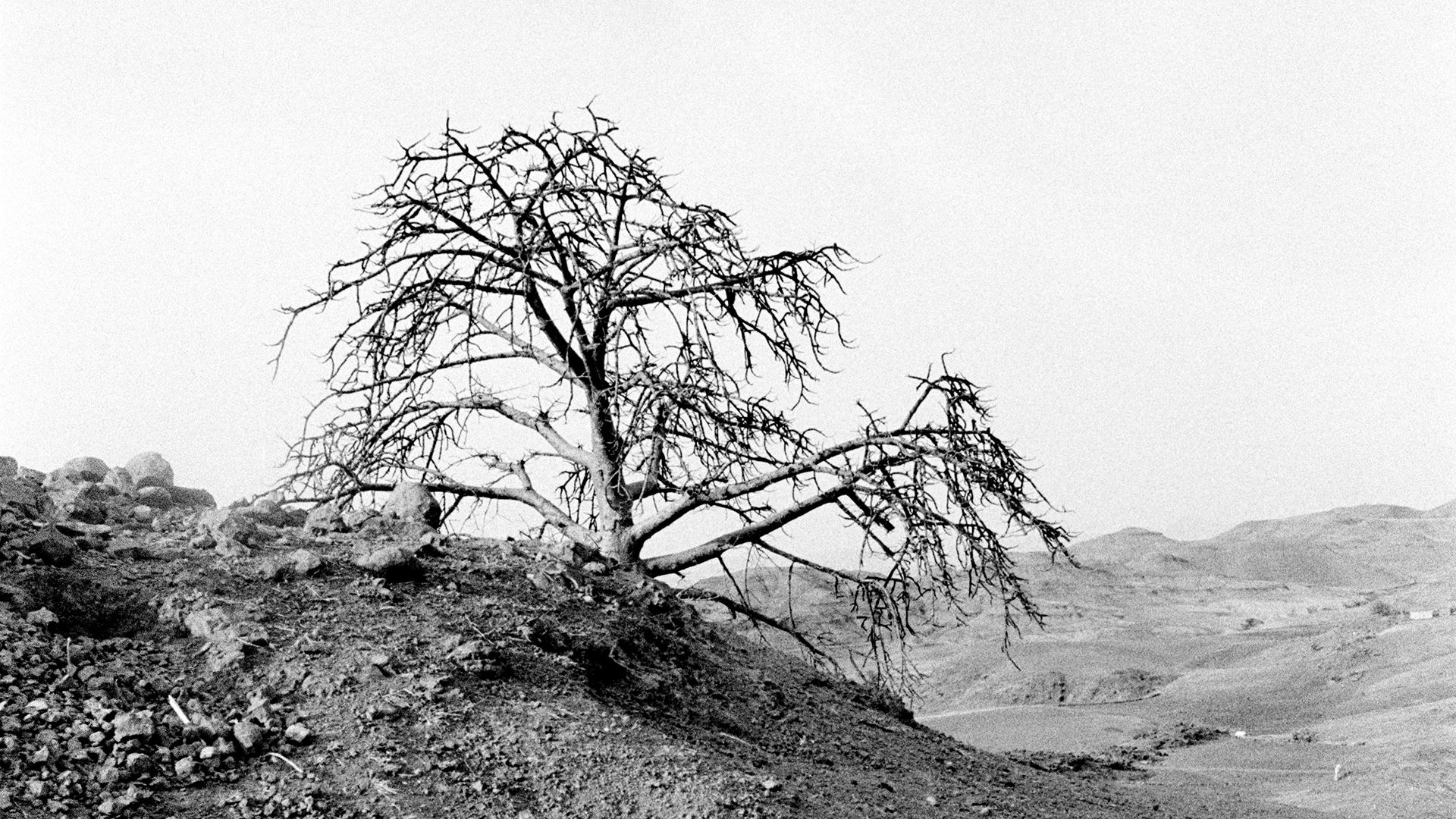Of Life and Labour: Sohrab Hura's Pati
In a dusty, barren landscape, set amid the sounds of a strong wind, the camera slowly comes to focus on a young boy with empty eyes and a blank expression. The handwritten title Pati appears, first in Hindi and then in English. Sohrab Hura’s eleven-minute-long black-and-white documentary film depicts the realities of a small village in the Central Indian state of Madhya Pradesh, which was once lush but has since turned into a desert as a result of extreme deforestation.
Hura first travelled to this village in 2005 as part of the “Right to Food” campaign, accompanying the economist and social scientist Jean Drèze. Under this campaign, a bus travelled across ten northern and central Indian states for fifty-two days with the intention of garnering support for the implementation of the Mahatma Gandhi National Rural Employment Guarantee Act (MGNREGA). The act, which at the time was still a bill in the parliament, guarantees all citizens employment for a hundred days at a minimum wage. The implementation of the act was seen as a monumental social security measure which would allow unemployed citizens to earn a living and ensure food security, among other benefits. A month after the journey was completed, the parliament passed the bill.
Hura joined the bus journey shortly after completing his studies. Populated by activists, students, academics, journalists and artists, the campaign was open to anyone who could contribute in some way to the cause. Hura did so by making photographs of the villages he visited, which led to the creation of his documentary work Land of a Thousand Struggles (2005–06). Among the many villages he visited was Pati, where he has continued to return. The village and its people led Hura to contemplate his own life in an urban middle-class environment, in stark contrast to the lives lived in rural India. In Pati (2005–20), Hura lays bare the conditions of poverty in the village. The work comes together in the form of a short film including photographs and videos the artist made during his visits. Through the use of a voiceover, Hura also retells the stories of the villagers he met—their struggles and their everyday lives.
In a telephonic conversation, Hura reflected on how the form of the work, to him, becomes as important as its content; his photographs and videos become the raw material which come together in the short film. The film becomes an important medium in connecting the viewer to the people of Pati. Through the film they witness the deforestation, deprivation, the screeching sounds of the shovel, the strong winds, the protesting women and the working children—an experience which perhaps would have been incomplete in just photographs.
A particular scene from the film stands out when Hura says, “Life is not the easiest for the children too… There is no respite for anyone over here and any hand is a helping hand, no matter how small it is.” This voiceover is followed by a scene at a construction site where children are seen working—the youngest being a boy no older than a toddler, lifting small batches of stone on his head and passing it on to the adults. In an earlier scene, Hura says, “People here work till they die,”; it seems they start shortly after they are born. Glimpses of the rural life in Pati gesture at the struggles and the hardships of living in poverty and also the resilience of the people of Pati.
To read more about Sohrab Hura, please click here and here.
All images by Sohrab Hura. From the series Pati. Madhya Pradesh, 2005–20. Images courtesy of the artist.
Click on the image to view the album





